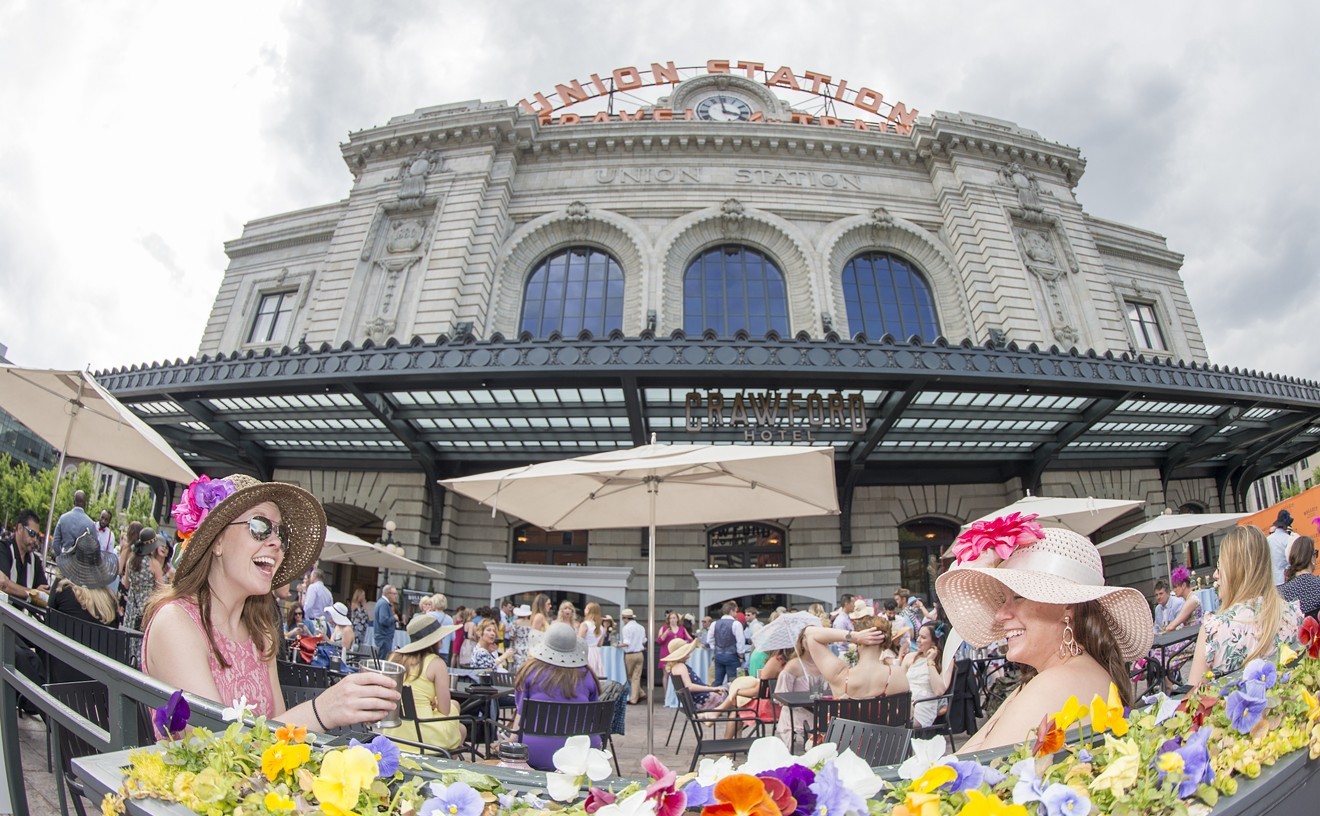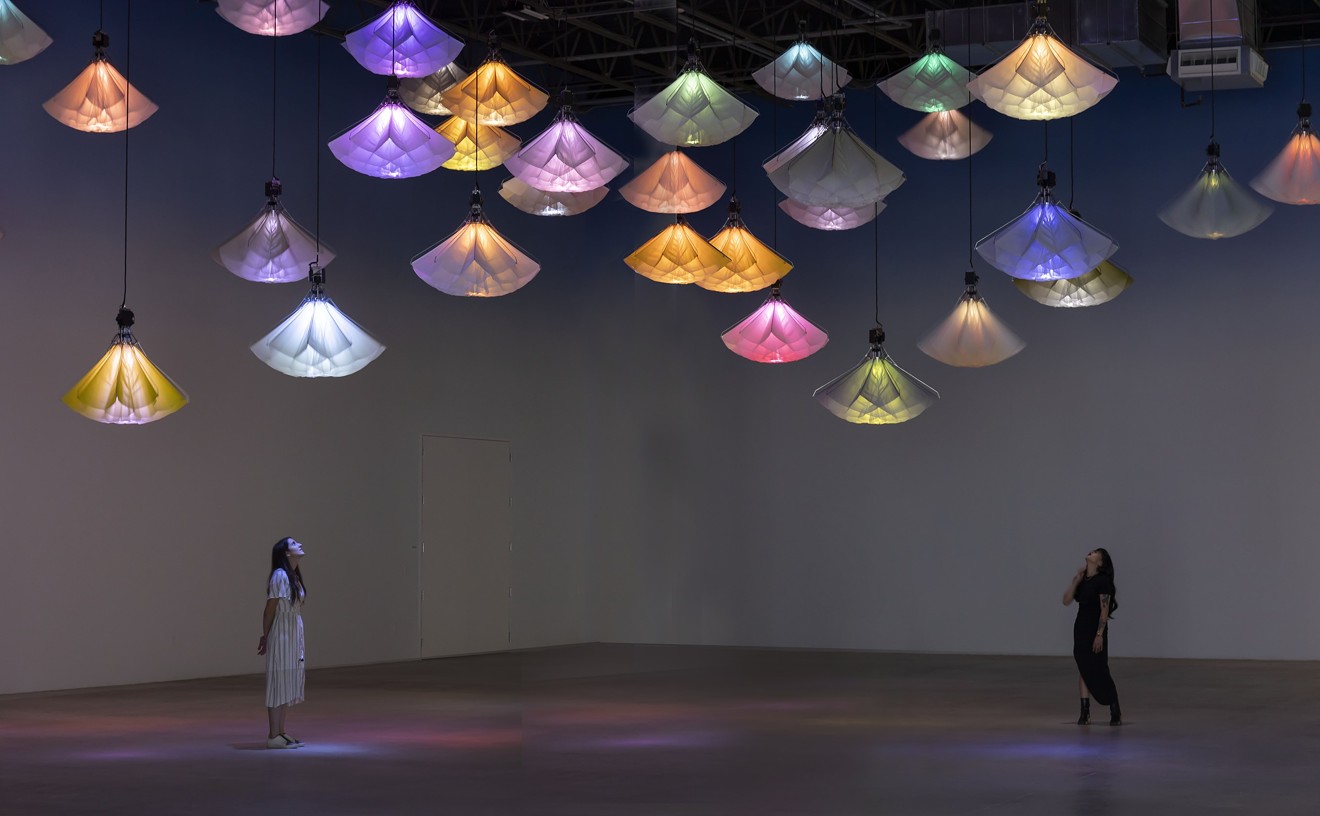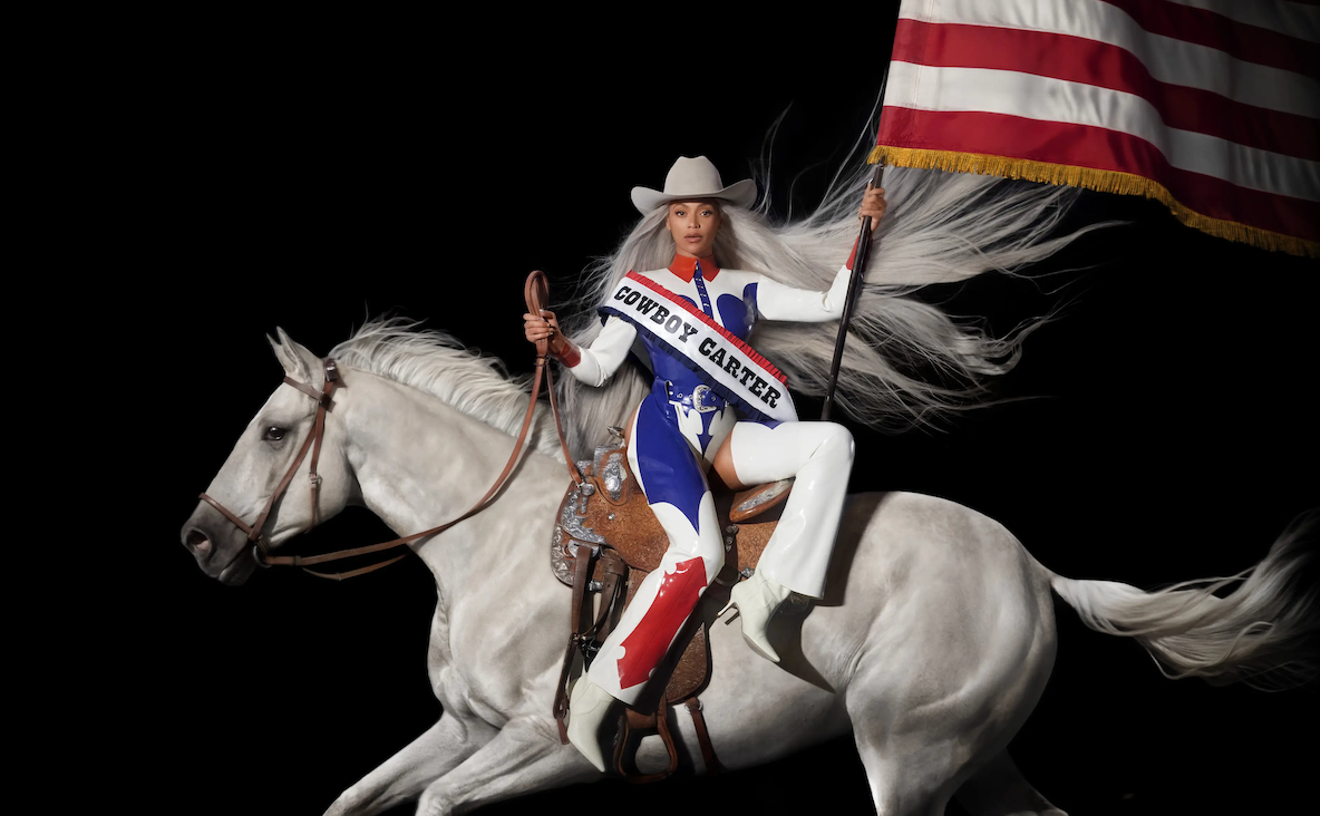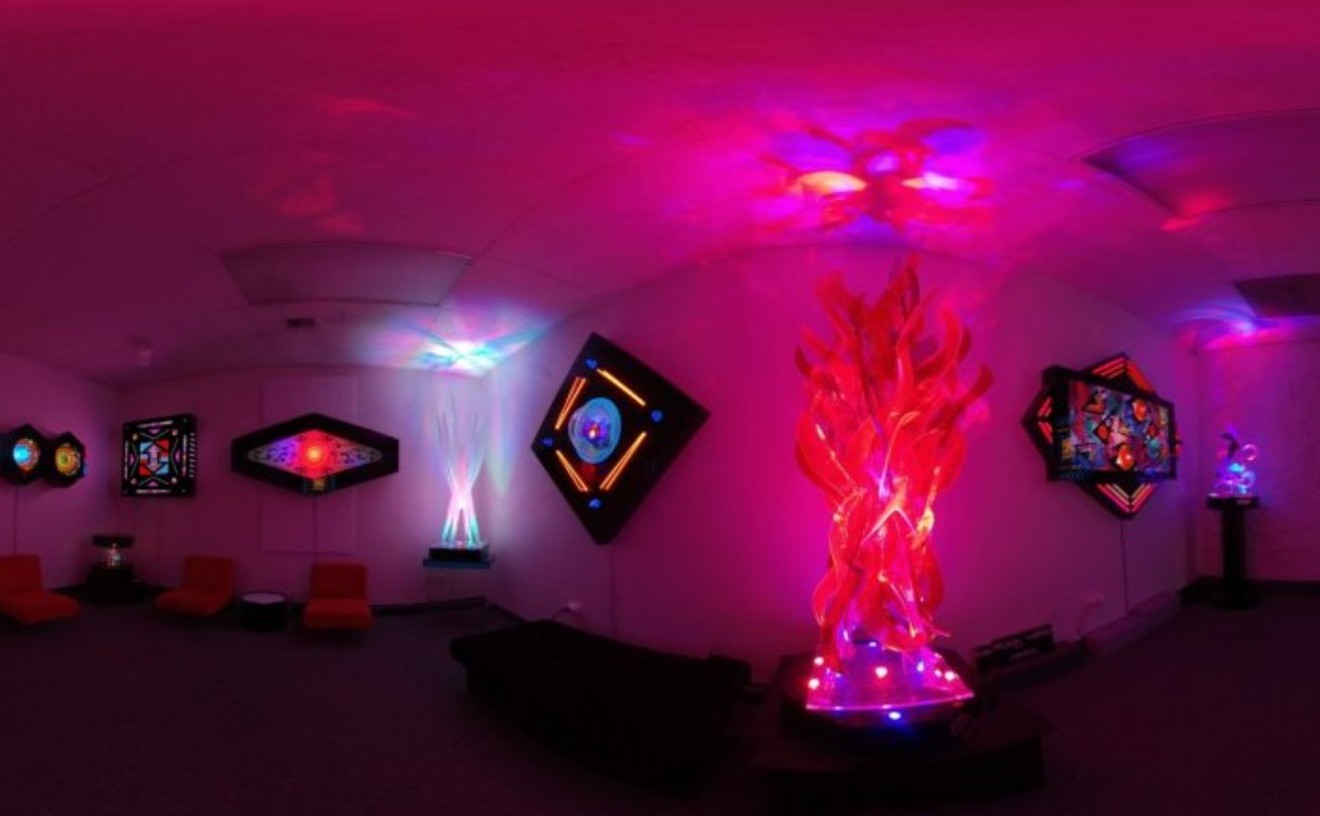As a consequence of Chisman's accomplishments, his work is included in many public and private collections in the region, notably the Denver Art Museum's. Over the years, his paintings have also been seen in important group shows. A case in point is 5 Abstract, currently up at Denver's Museum of Contemporary Art, a show in which director Cydney Payton chose only five living artists to represent the best in Colorado abstract art; in addition to Chisman, she selected Al Wynne, Bev Rosen, Robert Mangold and Clark Richert ("Broad Strokes," January 24).
Despite this exposure, it's been a long time since Chisman was the subject of a solo show. In fact, aside from a tiny etching show at Rule in 1999, this is the artist's first exhibit in four years. That's really too bad, because Chisman is tremendously prolific and, given the opportunity, could easily have filled an annual roster of exhibits in the intervening years. But that didn't happen, and, as a result, there are entire bodies of his work that have never been seen by the public, including a series of paintings executed in New York in 2000 and 2001. Chisman sees these paintings as being preparatory for the more recently completed pieces that make up the Rule show and which were done in his Denver studio.
That studio, not far from the Pirate and Edge co-ops on the city's northwest side, is also not far from where Chisman grew up. Born in Denver in 1943, Chisman showed an early interest in art and, at North High School, became a star student of the late art teacher and pioneering Denver modernist Martha Epp. After graduation, Chisman attended a 1961 summer session at the Colorado Springs Fine Arts Center, where he studied with another early Colorado modernist, Mary Chenoweth. Chenoweth's influence became essential to Chisman's development as a mature painter.
The recent paintings at Rule continue to reveal this intimate aesthetic relationship to Chenoweth in that, like her, Chisman paints color fields in bold hues and marks the fields with roughly done geometric or conventionalized organic shapes. And like his mentor, Chisman never seems to exhaust the possibilities of abstract painting. (In Chenoweth's case, only her death in 1999 stopped her, and she continued to create large-scale paintings right into her final months.)
Chisman earned his BFA from the University of Colorado at Boulder in 1965 and later studied briefly with Lester Johnson and Louis Finkelstein at Yale University and at the Royal College of Art in London. He'd wound up in England after meeting David Hockney, who was a visiting artist at CU. At the time, Hockney was about to become a mega-famous British painter. In London, Chisman survived the drudgery of a British art school by working as Hockney's studio assistant; the two developed a close personal relationship, and Chisman is even mentioned in Hockney's biography.
Back in Boulder, Chisman got his MFA in 1969; afterward, he traded on the connections he'd made with Johnson, Finkelstein and Hockney and moved to New York. He quickly found a measure of success, joining the stable at the Martha Jackson Gallery in 1972. "I probably could have gone further if I had stayed in New York and pushed it," says Chisman, who moved back to Denver in 1984. "But after a while, I just had to get out of there."
When Chisman returned, he was little known except to a small group of artist-friends who remembered him from the '60s. The problem was fixed, however, after he joined Pirate and was then picked up by the Cydney Payton Gallery. (That gallery became the Payton-Rule Gallery and then, simply, the Rule Gallery; Chisman has shown at least once during each permutation.) His exhibits in the '80s and '90s established Chisman as one of the greatest artists in the city.
In many ways, Chisman's newest paintings are clearly part of a tight continuum going back to his work of twenty or more years ago. On the other hand, they have some elements that are obviously new.
"When I came back from New York last February," recalls Chisman, who had a rented studio there for some months, "I decided to do a series of large-sized paintings that would also be large in scale." This decision was based on the fact that his New York studio's small size prevented him from doing large paintings, while his Denver studio is quite spacious, with high ceilings. Chisman had returned to the wide-open West (even if it was only indoors).
"Dale always grows and strives, and that's why I never tire of his work," says gallery director Robin Rule, who selected the paintings in the show. Rule has been involved with Chisman's career since the days of Payton-Rule, and she connects these new paintings to his earlier work. "Dale's new show is a celebration; it exudes confidence and joy. For a while, his paintings were about angst and anger, but this time, even when he uses a dark palette, the paintings are not gloomy," she points out. Chisman takes issue with Rule on this point, saying, "My paintings have never been gloomy."
Rule has hung the most recently completed of Chisman's large paintings, "Palabra," on the wall that faces viewers as they enter the gallery. It's colorful, and it has a clear graphic power that can easily be seen by the occupants of the cars that go whizzing by on Broadway. (That's how I first encountered the show, and it made me think to myself, "Wow.")
I understand the decision to put "Palabra" where it is, but after touring the show with Chisman, I think it makes more sense to begin with the oldest painting in the group, "History, Part 7," which is hung on the south wall of the main part of the gallery, then proceed to the three other large paintings in this room before returning to "Palabra." After that, consider the "Three Conjugations Series," a group of small paintings that were done after the large ones. "Palabra" anticipates the "Conjugations" paintings, which have been hung near it.
Back to "History, Part 7," an oil on linen. Principally umber brown and dark ultra-marine blue with lines, bars and shapes in white, it represents a problem painting for Chisman. "I was struggling with the piece," he explains. "There was no white in it at all. I was going to paint it over entirely in white, and I angrily began slashing in white paint. Then I thought, 'Hey, this is really starting to work.' I pulled in the ultra-marine, and it really came together."
Stylistically, "History, Part 7" and the rest of the stuff at Rule are examples of neo-abstract expressionism. Chisman doesn't like this appraisal and bristles at the comparison, but as he ticks off the attributes of his painting process, his denial falls under its own weight. Though he says he has "never thought of his work as being abstract expressionist at all," he says he uses "automatist brushwork" and chooses his colors instinctually. He points out that his paintings contain "the coincidence of unconsciousness and consciousness." Plus, the paintings are "mostly flat and not really about implied space." Doesn't this description sound pretty much like a working definition of abstract expressionism?
One style that Chisman does acknowledge as an influence is color-field abstraction, which itself can be seen as a type of abstract expressionism. "I think my work relates to color-field painting," he says. "I like to first draw on a painting and then put a field down and bring the drawings back out in the field. I like to feel that open expanse of space, of color, and I don't want to fill it up with mark making." The underpainted drawings are frequently visible through the color field, and Chisman says he has never used the visible underpainting in a more obvious or extensive way than he has in "7 Days."
Without a doubt, the most Chismany of these Chismans is "Otten Notten," done principally in red, with lines and shapes in black. The shapes suggest the figure, but only vaguely. On the left is a line drawing that resembles bones, on the right a black amorphous shape that might be a head. In "Vessel 2," painted in a delicious olive-gray, a shape in black and brown suggests a vase, which in turn suggests a torso. Chisman explains that in the '60s, he was a figural abstractionist and that all along he has looked to the figure -- albeit in its most reductive expression, the empty vessel -- for inspiration.
Now's the time to more carefully check out "Palabra." Although there are fewer identifiable lines in this piece than in any of the others, they are more dominant here. This is because Chisman has used strong colors like red and yellow that stand out against a mostly bluish, icy-white field, and because the lines are robustly and thickly painted. The palette and the shapes of the lines, including a zigzag and an S-curve, give the painting a retro-modern aspect and recall the work of Miró, if only subtly. (Though Chisman doesn't currently list Miró among his stylistic mentors, he has in the past.)
It's easy to see how "Palabra" would lead Chisman to paint the small and intimate "Three Conjugations Series" paintings, which are distinguished only by number titles from "#1" to "#5." However, there is something unusual about these paintings: They suggest landscapes. Each is divided into two parts by a horizontal division between two color fields. The looping lines that run off the edges at the top and bottom reinforce the landscape reference, since they could be read as trees -- though that's not what Chisman intended. The lines might also be interpreted as figures in the landscape.
The colors Chisman uses for these small paintings are much wilder than those in the large paintings. In "#2," avocado green is combined with burnt orange for a very '60s-'70s look. For "#3," it's grape and acid green -- also retro-groovy. Interestingly, these nostalgic color choices represent a current trend not only in art, but in fashion and interior design.
The five little "Conjugations" are the successors to the five major paintings at Rule. Taken together, the two distinct bodies of work demonstrate to one and all how relentlessly innovative yet oddly consistent Chisman is. And since it will be a couple years until he gets a shot like this again, it makes sense to take the trouble to see this one before it closes in a few short weeks.










